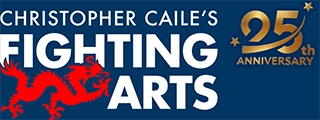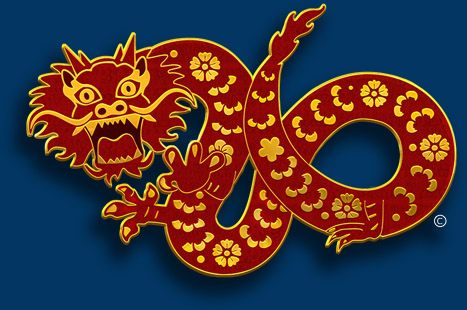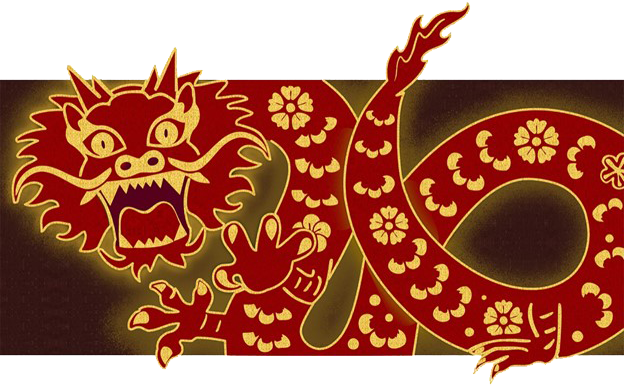Fighting Back At 40,000 Feet
Part 2 – Group Principles, Individual Strategies
By Christopher Caile

Don't forget your knees and elbows when fighting back
You're comfortably strapped in your seat, 40,000 feet in the clouds and day dreaming — then suddenly you are jolted awake. There's commotion, men yelling and screams: "Stop him, stop him," and "Oh, my God."
There's a man with a knife, and he might not be alone. The hard reality is that after 9/11 future terrorist attempts to take over or blow up an airplane are still possible. Although it is unlikely that you will actually be personally involved, this article will give you some pointers – just in case.
"Your primary objective is to protect the integrity of the cockpit, the pilots' lives and their control over the plane…"
Part 1 of this series discussed this possible eventuality, and the dilemmas of choice and morality passengers would face if terrorists struck. If terrorists attempt to take over your flight, your primary objective is to protect the integrity of the cockpit, the pilots' lives and their control over the plane, or barring that, retaking control of the cockpit and its controls from the terrorists. Crashing the plane to deny the terrorists' ultimate goal is the last and obviously least desirable outcome. It also forces the issue of where and who might get killed on the ground.
But the terrorists might have other plans. Their sole objective may be just to use a bomb to crash the plane and kill all on board. We have also become so polarized by 9/11 that we might not recognize the "classic" pre-9/11 type of hijacker, whose aim was to use passengers, crew and the plane as a bargaining chip.
This article will discuss some general strategies, tactics and methods passengers might employ in several of these scenarios. Included are principles of group action as well as individual strategies and a few concepts of action. The emphasis is on basics and group dynamics: how two or three people, as well as a larger group, can fight back in a coordinated action – a team approach.
Group action does not require expert self-defense skills. So, if you're expecting to learn fancy Bruce Lee-like jumping kicks, or learn how to do Jackie Chan flip-like moves on an Osama bin want-to-be, you won't find these here. In Part 3, I will list various improvised weapons, shields and artillery that will assist you.
Over 700 million passengers board US airlines annually. The chances that anyone on your plane is a danger to you is minimal. So keep your perspective and don't overreact. But, there are some precautionary measures you can take.
First, you should think ahead of time about what you might do and what weapons you could use, just in case. Another critical element is awareness. Pay attention to those seated next to and around you. Talk to them. Observe their behavior. We know weapons can get on a plane, and Abdel Rahim, the alleged shoe bomber, illustrated that explosive materials can too.
The observations of passengers and crew are the final line of defense against use of such items. So be aware of people who seem to be together, but try to act like they aren't; anyone who looks suspicious; takes suspicious actions; or acts especially nervous.
If someone sneaks a small bomb onboard, or tries to ignite it, or press it into the cabin wall, it will be up to a passenger or flight attendant to notice and take action.
You can also request seating on an aisle or in an exit door row in order to be in the best position to respond if need be. And, if you are traveling with others, discuss what you might do if action is required. One person might say, "I'm on the aisle, so if a terrorist is within reach, or moves past me, I will jump him from behind, and you grab his legs so we can hold him down."
"The more people who react and resist together, the better the chance of overwhelming the enemy."
A basic premise of this article is: the more people who react and resist together, the better the chance of overwhelming the enemy. If ten, twenty or more passengers are motivated and able-bodied, they should be able to overpower a smaller group of terrorists even if they are armed with knives, box cutters, or even a gun. That's why the 9/11 terrorists chose to attack early morning flights which had fewer passengers – a smaller pool of potential resistors.
The second premise is: the more coordinated the effort, and the better armed the passengers are, the better chance of success. You can fight back just by yourself, but acting with one, two or three others, or responding in a larger group, is much more effective. This group action compensates for lack of individual self-defense skills, although onboard the plane there may be off duty law enforcement personnel or others trained in self-defense.

Using a brief case as an improvised weapon

The hard corner of a computer thrust into an eye is also extremely effective
In a group action any one person can attack, but he or she can also grab, wrestle, defend, distract, block or smother. Improvised weapons also help and shields can be used for defense, blocking or smothering operations.
Group action includes efforts to isolate targets, coordinate efforts and/or attack in mass. These aspects will be discussed below.
"The more coordinated the effort, and the better armed the passengers are, the better chance of success."
Action planning might be spontaneous, discussed ahead of time with associates as suggested, or quickly formulated with others around you. Even four or five terrorists can't be everywhere, so there will always be opportunity for some passengers to do some quick planning.
Pilots, crew members, and air marshals might also get involved. Pilots might maneuver or dive the airplane to unbalance any terrorists. They can also depressurize the cabin. Flight attendants may also physically intervene.
If there are air marshals present, assist them if necessary, but otherwise get out of the way. They will try to identify targets, and there will be drawn guns and probably shots (hard rubber bullets). So stay in your seat, or hit the floor if this occurs. If you remain standing, turn toward the back of the plane and don't move toward the cockpit. The air marshal's job is to protect the pilots and the cockpit. Don't let them mistake you for the target by moving in the wrong direction.
Some strategists have suggested that a terrorist might initially create a distraction to flush out any air marshals. Once they have sprung into action, the air marshals can be identified and attacked by other terrorist members. Air marshals might only get off several rounds from their revolvers aimed at one target before being overwhelmed by another terrorist nearby.
This scenario illustrates an important principle of group action: isolation. An air marshal or terrorist is most vulnerable when alone, isolated along a cabin aisle, or in his or her seat. So if a terrorist is attacking an air marshal, or someone has jumped up with a weapon or seized a hostage, a quick response by passengers in the area who intercede might just end the takeover before it has fully developed. If there are just one or two terrorists on board, they might be subdued in this way.

While one passenger blocks a terrorist's knife with his forearm wrapped in a jacket, he also punches the attacker's face. At the same time, from behind, the terrorist is attacked by another passenger using an elbow to the head.

The passenger behind the attacker continues the action by reaching over with his fingers to gorge the terrorist's eyes while at the same time yanking him backwards.
This "simultaneous action" on the part of passengers is the second important principle of group action. The concept is very different from individual self-defense, although individual self-defense skills are useful too. Here the premise is not focused on individual action, but multiple people working as a unit to attack, grab, hold, punch, etc, from all sides at once to overwhelm the target. Anyone can play a roll.
If you are seated in an aisle seat, your role in the group action might be to grab an arm or tackle someone from the side, or push someone into a seat across the aisle where others can grab him. If someone else is fighting with a terrorist, your contribution will be a surprise. Someone else behind the terrorist can at the same time tackle him, or jump on him to pin his arms, strike him in the back of the neck or head with an elbow, or kick him in the back of his knees to fell him backwards.

An aisle passenger surprises an armed attacker from the side by grabbing his knife arm. He could have also tackled the terrorist.
If you are in front of a terrorist, you can kick or strike out, grab or wrestle. The greatest danger to any passenger is a weapon such as a knife. So if one is present, and the terrorist is targeting you, grab something you can use as a shield. The danger will be only momentary, if others quickly join in. At the same time you can also counter-attack, either to injure him or force him to keep some distance. You might target the terrorist's eyes with your finger tips or strike out with an improvised weapon.

A passenger blocks a knife slash with his forearm protected by his sports jacket wrapped around it while at the same time attacking a terrorist's eyes

While blocking, a passenger strikes out with an improvised weapon, a camera inside waist pack
Another thing about shields: don't get fancy. Don't move it all around trying to follow the weapon's path. If the shield is large, just hold it out. Only a slight adjustment is needed. If only your forearm is protected, still try to limit any movement to areas directly to the front, being especially careful to protect your face and neck. Evidence gathered from Al Qaeda sources suggests that the 9/11 terrorists were trained to attack primarily facial targets with their box cutters. The theory was that the sight of blood and pain from facial or neck cuts would create such shock and trauma that passengers would be intimidated into inaction.
Also be sure to keep the insides of your forearms turned toward you. A shield can help protect, but not a guarantee against cuts. A cut on the outside of your forearm will hurt and bleed, but one to the palm side can sever a major artery as well as tendons that control your hands and fingers. So keep your forearm turned inward.

Using a carry on bag as a shield
Shields are everywhere: a seat cushion (designed to be removed for floatation uses), bag, or brief case. You can also wrap your coat or your suit jacket around your forearm to protect it. Larger shields can also be pushed into people to smother them, or to block use of their arms. Part 3 will provide more detail on where to find and make shields and weapons.
Another thing you can do is shout. A quick, powerful shout, known as a "kiai' in the martial arts, can produce a momentary "startle reflex." This creates a brief opportunity for action. It also helps fight your own fear. A mind confronted with two inputs can only process one. This is referred to as "Cognitive Dissidence." And if several people shout and yell together, it might just unnerve the terrorists or at least disrupt their verbal communication.
Another important role in any joint action might be to block a terrorist's movement in one direction along an aisle so others can intercede before he can join others in his group. Here again a shield might be used. You can also relentlessly kick forward to stop the approaching person. Even if you are pushed backward and down on your back, you can keep kicking low with the bottom of your shoes into the terrorist's knees. This will impede movement, your body also helping to block the aisle, until others can join in.

A passenger momentary distracts an attacker by throwing coins from his pocket into his face
How does the airplane's physical environment affect passengers' ability to fight back? One negative factor is that the limited space restricts what techniques a passenger can use. Wide swinging punches or kicking movements don't work. The ceilings are too low and you are likely to hit other nearby passengers or strike overhead storage compartments. Direct or limited range techniques, however, are effective, such as kicks to the front or back and downward stomp kicks. So are straight punches, knees, thrusting attacks with improvised weapons, elbows and head butts.
A positive factor affecting passengers' ability to fight terrorists is that the tube-like structure of the plane creates difficult strategic problems for the terrorists. They may initially be separated by seating, and their movement is limited to narrow pathways along which you and other passengers are seated. If fighting begins, their space for movement is restricted. Their movement can be blocked and the limited width of aisles can also be used as a tool against them. If they are grouped along an aisle, they are still vulnerable, one in front of another. And there are more factors.
If a terrorist is hurt or stunned and is tackled to the ground, or has a leg lifted and is dumped backward into the aisle, he becomes very vulnerable. The aisle works to his disadvantage because it is difficult for his associates to assist him. The seats themselves provide a barrier to the sides, while other passengers can easily block the aisle so associates can't get to him.
Once on the ground, a terrorist's hands, fingers, wrists, ankles, the head and neck can be targeted and easily injured. So stomp down, hit or use an elbow. You don't want to leave a terrorist physically capable of being a continued threat. If a terrorist is just knocked down but is not incapacitated, he is still very dangerous.

A secondary technique is to grab a leg and dump someone backwards into the aisle so other passengers can either jump on or strike, kick or stomp at his hands, face, neck or feet, etc.
This is brutal stuff. You have to be vicious and unrelenting. Your goal is to hurt, injure or incapacitate. Most people normally think in terms of punching or striking to the back of the head, temples, side of the neck, and edge of the jaw next to the ear to stun, or knock out. However, an improvised weapon can increase the impact and also extend your range. Think of attacks to the eyes or throat that can affect vision and the ability to breathe. Also, a stomp on a hand can end the terrorist's ability to hold a weapon or grab. A kick into a knee, or a stomp down on an ankle or toes can limit his ability to walk. In short, you can knock someone out, but you can also attack his systems – vision, breath, and structure.
At any point others might pile on, weighing the terrorist down and physically restraining him. If the aggressor is only mentally deranged and is not a terrorist or hijacker, then taking him or her to the ground and the use of physical restraint alone is probably all that is necessary. Anyone restrained can be tied up using combinations of seat belts, waist belts, shoe strings and other items.
If you are fighting in an aisle, a very effective tactic is to turn or twist a terrorist and then pull him backward past your body. You will find that as he falls his body will get stuck halfway to the floor and sideways, wedged between your legs and an aisle seat. In this position he not able to move easily and you can easily add an elbow, punch or improvised weapon strike. Again, you don't want a terrorist just to be down; you want him hurt, incapacitated, or dead when he hits the aisle floor.
Aisle seats can also assist with your stability. Remember, while you are fighting or moving, the pilot may be helping out by shaking things up a bit. The secret to navigating the cabin and keeping balanced while the airplane shifts is bracing yourself. Notice how airline crew members easily brace themselves with their hips against the sides and backs of seats. If the plane begins to shift, brace your forward leg against the back of an aisle seat, your back leg, foot forward, keeping your body pressed forward into this support. This keeps your hands free while the plane does a "dipsi do." It also gives you a one up on any terrorist not so acquainted with this environment.
"Know and use the environment better than your enemy."
Some of the factors discussed above illustrate another principle of self-defense: know and use the environment better than your enemy. If you know how use the space to your advantage, know how to best fight in it, know what weapons work best and know how to stabilize yourself in the airplane too, you have gone a long way toward equalizing your chances.
Up until now we have talked about either one or two terrorists, or those in a larger group who are separated and have been isolated and simultaneously attacked by group action. What if there five, six, seven or more terrorists together?
This escalates problems, especially if the terrorists are toward the front of the plane with weapons, threatening to explode a bomb, or have a hostage. Here, as always, the ultimate necessity is the protection of the cockpit's integrity, safety of pilots and control of the plane. If they are threatened or compromised, everyone has to react. Fighting back here requires more than smaller group actions: a frontal assault by everyone is necessary.
If it is a wide body plane there will be two aisles along which passengers can move forward, while terrorists have to try to protect two approaches. Shields and weapons can be used by passengers while they also throw things (artillery), yell (psychological warfare) and move quickly and decisively in an all-out rush. Threats of a bomb or a threat on the life of a hostage can't be accepted, but the speed and decisiveness of the onrush might just so distract the terrorists that they are overpowered before a hostage is killed.
What buys time is that cockpit doors have been armored and the pilots inside might also be armed. In addition, pilots and crew members are no longer willing to go along with terrorist demands. A hostage's life may be threatened if pilots don't open their door, but this won't happen. As one senior United Airlines crew member told to me, "Pilots will never open their door. Now, after 9/11 they will never give up the controls to anyone, even if they threaten to kill someone, or say there is a bomb on board."
The only time I feel it might not be critical to fight back immediately is if the onboard incident turns out to be the "classic" hijack situation, where the aggressors are just demanding concessions and are using the threat of a bomb, a gun or hostages toward that end. Personally, I would rather sit out 24 hours of negotiations at the end of some runway than take premature action and cause the death of innocent passengers. In this situation pilots are now are instructed to make an emergency landing as quickly as possible. So, I think there would be little danger of ending up in a hostile country as a political intern. Fighter escorts would undoubtedly enforce this decision.
If you are taken hostage and have a knife or other weapon to your throat there is probably little you can do to protect yourself unless you are trained in self-defense (See: "Defeating A Knife To The Neck" which outlines one possible self-defense to this scenario)
Part 3 of this series will examine what is available to passengers to use for makeshift weapons, shields, artillery and other means to fight terrorists on a plane.
Disclaimer:
This article is for educational purposes only and does not represent advice, suggested action or activities that airline passengers should or could take. It represents the views of the author only, who is trained in self-defense and the use of weapons. The intent of this article is only to provoke thought. In the event of an actual airline incident the direction of airline flight crew, pilots and/or air marshals should be followed.

About the Author Christopher Caile

Screenshot
Christopher Caile is the Founder and Editor-In-Chief of FightingArts.com. He has been a student of the martial arts for over 65 years.
He first started in judo while in college. Then he added karate as a student of Phil Koeppel in 1959 studying Kempo and Wado-Ryu karate. He later added Shotokan Karate where he was promoted to brown belt and taught beginner classes. In 1960 while living in Finland, Caile introduced karate to that country and placed fourth in that nation's first national judo tournament.
Wanting to further his karate studies, Caile then hitch hiked from Finland to Japan traveling through Scandinavia, Europe, North Africa, the Middle East and South and Southeast Asia — living on 25 cents a day and often sleeping outside.
Arriving in Japan (1962), Caile was introduced to Mas Oyama and his fledgling full contact Kyokushinkai Karate by Donn Draeger, the famous martial artist and historian. Donn also housed him with several other senior international judo practitioners. Donn became Caile's martial arts mentor, coaching him in judo and introducing him to Shinto Muso-ryu under Takaji Shimizu.
Caile studied at Oyama's honbu dojo and also at Kenji Kurosaki's second Tokyo Kyokushinkai dojo. In his first day in class Oyama asked Caile to teach English to his chief instructor, Tadashi Nakamura. They have been friends ever since. Caile also participated in Oyama's masterwork book, "This Is Karate."
Caile left Japan with his black belt and designation as Branch Chief, the first in the US to have had extensive training in Japan directly under Oyama Sensei. As such, Oyama Sensei asked him to be his representative on visits to his US dojos to report on their status.
A little over a year later, Nakamura, Kusosaki and Akio Fujihira won an epic David vs. Goliath challenge match against Thailand's professional Muay Thai Boxers in Bangkok, Thailand, thrusting Kyolushinkai and Nakamura into national prominence.
Back in the US Caile taught Kyokushinkai karate in Peoria, Il while in college and later in Washington, DC. while in graduate school. Durimg this time Shihan Nakamura had moved to New York City to head Kyokushinkai's North American Operation.
In 1976 when Kaicho Tadashi Nakamura formed the World Seido Karate organization, Caile followed. Living then in Buffalo, NY, Caile taught Seido karate and self-defense at the State University of New York at Buffalo (SUNY Buffalo) for over 15 years where he also frequently lectured on martial arts and Zen in courses on Japanese culture.
Caile moved to New York City in 1999 to marry Jackie Veit. He is now an 8th degree black belt, Hanshi, training in Seido Karate's Westchester, NY Johshin Honzan (Spiritual Center) dojo. In Seido Caile is known for his teaching of and seminars on kata applications. He also produced a 14 segment video series on Pinan kata Bunkai currently available to Seido members.
Caile is also a long-time student and Shihan in Aikido. He studied in Buffalo, under Mike Hawley Shihan, and then under Wadokai Aikido's founder, the late Roy Suenaka (uchi deshi under Morihei Ueshiba, founder of Aikido and was Shihan under Tohei Sensei). In karate, Suenaka (8thdan) was also an in-house student of the Okinawan karate master Hohan Soken.
Having moved to New York City, Caile in 2000 founded this martial arts educational website, FightingArts.com. Twenty-five years later, in 2025, it underwent a major update and revision.
For FightingArts.com and other publications Caile wrote hundreds of articles on karate, martial arts, Japanese art, Chinese Medicine and edited a book on Zen. He also developed relationships with a cross section of leading martial arts teachers. Over the last four decades he has conducted extensive private research into karate and martial arts including private translations of the once secret Okinawan hand copied and passed on Kung Fu book, the Bubishi, as well as an early karate book by the karate master Kenwa Mabuni. He periodically returns to Japan and Okinawa to continue his studies and participate Seido karate events. In Tokyo he practiced (with Roy Suenaka Sensei) in a variety of aikido organizations with their founders – including private interviews and practices at the Aiki-kai Aikido Honbu dojo with the son and grandson of aikido's founder, Doshu (headmaster) Kisshomaru (an old uchi-deshi friend) and his son, Moriteru Ueshiba and in Iwama with Morihiro Saito. On Okinawa he studied Goju Ryu karate under Eiichi Miyazato, 10th dan founder of Naha's Jundokan, and also with Yoshitaka Taira (who later formed his own organization, who specialized in kata Bunkai. While there Caile also trained with Hohan Soken's senior student, Master Fusei Kise, 10 dan as well as with the grandson of the legendary karate master Anko Itosu.
Caile's other martial arts experience includes: Diato-ryu Aikijujitsu and Kenjitsu, kobudo, boxing, Muay Thai, MMA, Kali (empty hand, knife and bolo), study of old Okinawan Shoran-ryu & Tomari body mechanics, study of old Okinawan kata under Richard Kim, study of close quarter defense and combat, including knife and gun defenses, Kyusho Jitsu and several Chinese fighting arts including 8 Star Praying Mantis, Pak Mei (White Eyebrow), and a private family system of Kung Fu.
Caile is also a student of Zen as well as a long-term student of one branch of Traditional Chinese Medicine, Chi Kung (Qigong). As one of two senior disciples of Chi Kung master Dr. Shen (M.D., Ph.D.) Caile was certified to teach and practice. This led to Caile's founding of the The Chi Kung Healing Institute on Grand Island, NY. In Western NY, he also frequently held Chi Kung seminars, including at SUNY Buffalo and at the famous Chautauqua Institution in Chautauqua, NY. His articles on Chi Kung also appeared in the Holistic Health Journal and in several books on alternative medicine.
Caile holds a BA in International Studies from Bradley University and MA in International Relations with a specialty in South and Southeast Asia from American University in Washington, D.C. While in Buffalo, NY he also studied digital and analog electronics.
In his professional life Caile also worked in public relations and as a newspaper reporter and photographer. Earlier he worked in the field of telecommunications including Managing a Buffalo, NY sales and service branch for ITT. He then founded his own private telephone company. This was followed by creation of an electrical engineering company that designed and patented his concept for a new type of low-cost small business telephone system (which was eventually sold to Bell South). The company also did contract work for Kodak and the US space program. Simultaneously Caile designed and manufactured a unique break-apart portable pontoon boat.
Most recently Caile co-founded an internet software company. Its products include software suites with AI capability for control and management of streaming media, such as video and music, an all-in-one book publishing software product for hardcover, eBook and audio book creation and security software for buildings and government use.
For more details about Christopher Caile's martial arts, work experience and life profile, see the About section in the footer of this site.
Search for more articles by this author:






